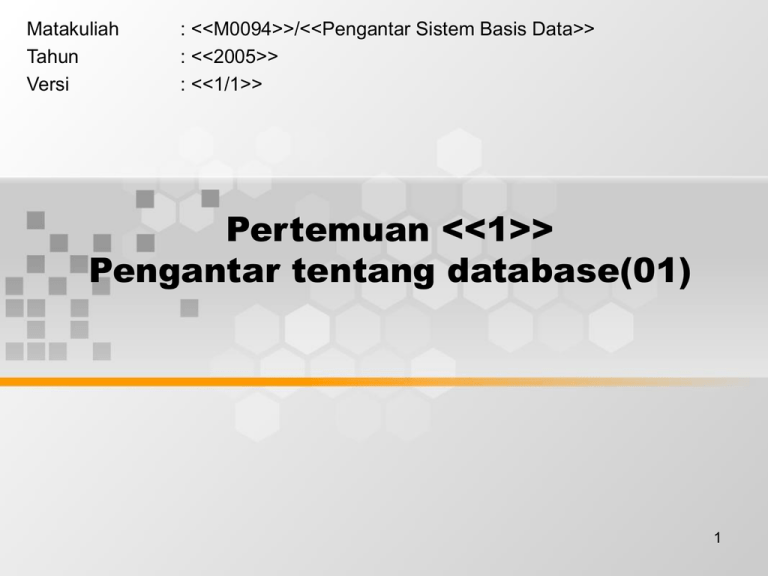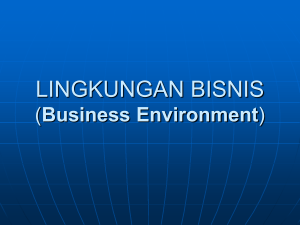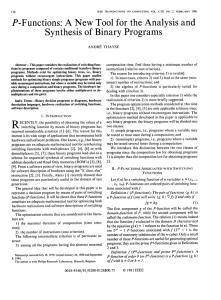Matakuliah : <<M0094>>/<<Pengantar Sistem Basis Data>> Tahun : <<2005>>
advertisement

Matakuliah Tahun Versi : <<M0094>>/<<Pengantar Sistem Basis Data>> : <<2005>> : <<1/1>> Pertemuan <<1>> Pengantar tentang database(01) 1 Learning Outcomes Pada akhir pertemuan ini, diharapkan mahasiswa akan mampu : • Mahasiswa dapat Menerangkan perbedaan antara sistem database dengan sistem file based 2 Outline Materi • aplikasi/penerapan database sehari-hari • karakteristik file-based • masalah dan keterbatasan file-based 3 Chapter 1 Introduction to Databases Transparencies 4 Pengantar Sistem Basis Data Tujuan : mempelajari konsep dasar tentang database analisis data menggunakan model relasional penggunaan instruksi SQL untuk mengoperasikan suatu database Buku : Connolly, T.M., and Begg C.E.. (2002). Database Systems: A practical Approach to Design, Implementation, and Management. 3rd Ed. Addison Wesley. 5 Pengantar Sistem Basis Data Silabus : Ch. 01 : Pengantar tentang database Ch. 02 : Database environment Ch. 03 : Model Relasional Ch. 04 : Relational algebra and relational calculus Ch. 05 : SQL: Data Manipulation Ch. 06 : SQL: Data Definition dan View Ch. 21 : SQL: Programatic SQL Ch. 09 : Perencanaan, Desain dan Administration Database Ch. 10 : Penemuan Fakta Ch. 11 : Entity-Relationship (ER) Modeling Ch. 12 : Perluasan E-R Ch. 13 : Normalisasi Data 6 Pengantar Sistem Basis Data Tatacara di kelas Kuliah sesi 1 : Pengantar Pembentukan Kelompok Mulai minggu ke 2 – dst (optional) : Kuis Pembahasan materi Diskusi kelompok Presentasi kelompok 7 Pengantar Sistem Basis Data Peta konsep materi kuliah 8 Chapter 1 - Objectives Some common uses of database systems. Characteristics of file-based systems. Problems with file-based approach. Meaning of the term database. Meaning of the term Database Management System (DBMS). 9 Examples of Database Applications Purchases from the supermarket Purchases using your credit card Booking a holiday at the travel agents Using the local library Taking out insurance Using the Internet Studying at university 10 File-Based Systems Collection of application programs that perform services for the end users (e.g. reports). Each program defines and manages its own data. 11 File-Based Processing 12 Limitations of File-Based Approach Separation and isolation of data – Each program maintains its own set of data. – Users of one program may be unaware of potentially useful data held by other programs. Duplication of data – Same data is held by different programs. – Wasted space and potentially different values and/or different formats for the same item. 13 Limitations of File-Based Approach Data dependence – File structure is defined in the program code. Incompatible file formats – Programs are written in different languages, and so cannot easily access each other’s files. Fixed Queries/Proliferation of application programs – Programs are written to satisfy particular functions. – Any new requirement needs a new program. 14 << PENUTUP>> Dilanjutkan ke pert. 02 PENGANTAR TENTANG DATABASE 15

